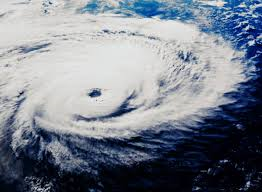We already have heard enough about climate change that I don’t have to drag you through the litany of  weather-related changes we have already seen or the futuristic scenarios that anticipate rising sea levels and an increase in extreme weather events such as tsunamis, hurricanes, tornadoes, and earthquakes. There’s also been a lot of talk that humanity will not be able to work its way out of these issues via quick technological fixes: there needs to be a great shift in social priorities that seek ways to turn the situation around, and some think it may already be too late.
weather-related changes we have already seen or the futuristic scenarios that anticipate rising sea levels and an increase in extreme weather events such as tsunamis, hurricanes, tornadoes, and earthquakes. There’s also been a lot of talk that humanity will not be able to work its way out of these issues via quick technological fixes: there needs to be a great shift in social priorities that seek ways to turn the situation around, and some think it may already be too late.
Well, although it would be a mistake to presume we can fix our way out of the problem, it is interesting to consider how 3D printing can be a positive part of the solution. But this makes sense when you consider how efficient 3D printing can be. As the Bulletin of Atomic Scientists explains, “the ability to print replacement parts for generators, water filters, or temporary shelters—on site—may become a critical and inexpensive tool of climate adaptation, particularly in zones of instability and conflict.” And another advantage 3D printing has in the fight against climate change is that it can allow for cost-effective greenhouse gas reduction for societies seeking greater energy efficiency in manufacturing processes and products.
There are many examples of the military’s knowledge, testing, and use of 3D printing in extreme conditions; these conditions give us a glimpse of possible scenarios attached to climate related catastrophes. Since 1997, the US Agency for International Development’s (USAID) Office of US Foreign Disaster Assistance has partnered with the National Oceanic and Atmospheric Administration (NOAA) to predict and prepare for weather events in the Global South. (Some critics would say that this preparation is nowhere near what it should be today.) Recently, as an example of an application of 3D printing, 3D printed weather stations are cutting costs and increasing the ability to print replacement parts quickly in remote locations. This makes sense, right?
But we don’t just want to kick back and think that it’s all in the military’s hands and that poor  countries of the Global South can rest assured that wealthier countries have their backs when it comes to climate disaster preparedness. In fact, the great thing about 3d printing is that it empowers civilians to take things into their own hands and design and print the devices and items they envision using to confront extreme weather conditions. The ability to share open-source designs and empower grassroots knowledge of the technology is probably 3D printing’s greatest overall contribution to combating climate change.
countries of the Global South can rest assured that wealthier countries have their backs when it comes to climate disaster preparedness. In fact, the great thing about 3d printing is that it empowers civilians to take things into their own hands and design and print the devices and items they envision using to confront extreme weather conditions. The ability to share open-source designs and empower grassroots knowledge of the technology is probably 3D printing’s greatest overall contribution to combating climate change.
According to the Bulletin of Atomic Scientists, there are other characteristics of 3D printing that make it amenable to climate change preparedness: it can de-globalize hazards, making it easier to enact on-site local production of parts instead of shipping costly items around the world. It can increase accessibility of goods in more remote areas that are difficult to reach. It can enhance energy efficiency since on average additive manufacturing uses 50% less energy and can save up to 90% in material costs. Also, it allows you to only print the parts required, and shipping costs are greatly reduced with on-site production capabilities. Also, 3D printed parts can be made lighter than original parts, and lighter objects require less fuel.
While the verdict is still out on how seriously the world’s wealthiest governments are taking climate change science and recommended preparation measures, it’s clear that 3D printing can contribute in multiple arenas in helpign us prepare for the possibility of increasing catastrophic weather events. We only hope that all of this can be done in time.
Do you think that 3D printing will have a major role in combating climate change? If so how? Discuss in the 3D Printing and Climate Change Forum thread on 3DPB.com.
Subscribe to Our Email Newsletter
Stay up-to-date on all the latest news from the 3D printing industry and receive information and offers from third party vendors.
You May Also Like
3D Printing News Briefs, April 13, 2024: Robotics, Orthotics, & Hypersonics
In 3D Printing News Briefs today, we’re focusing first on robotics, as Carnegie Mellon University’s new Robotics Innovation Center will house several community outreach programs, and Ugogo3D is now working...
Rail Giant Alstom Saves $15M with 3D Printing Automation Software 3D Spark
3D Spark has entered into a three-year deal with the rail giant Alstom. Alstom, a transport behemoth with annual revenues of $16 billion, specializes in the manufacture of trains, trams,...
Meltio Expands Global Reach with New Partnerships in the Americas and Europe
Spanish 3D printing manufacturer Meltio has expanded its sales network across the globe. With the addition of three new partners in the United States, Brazil, Argentina, and Italy, Meltio aims...
3D Printing Webinar and Event Roundup: April 7, 2024
Webinars and events in the 3D printing industry are picking back up this week! Sea-Air-Space is coming to Maryland, and SAE International is sponsoring a 3D Systems webinar about 3D...

































